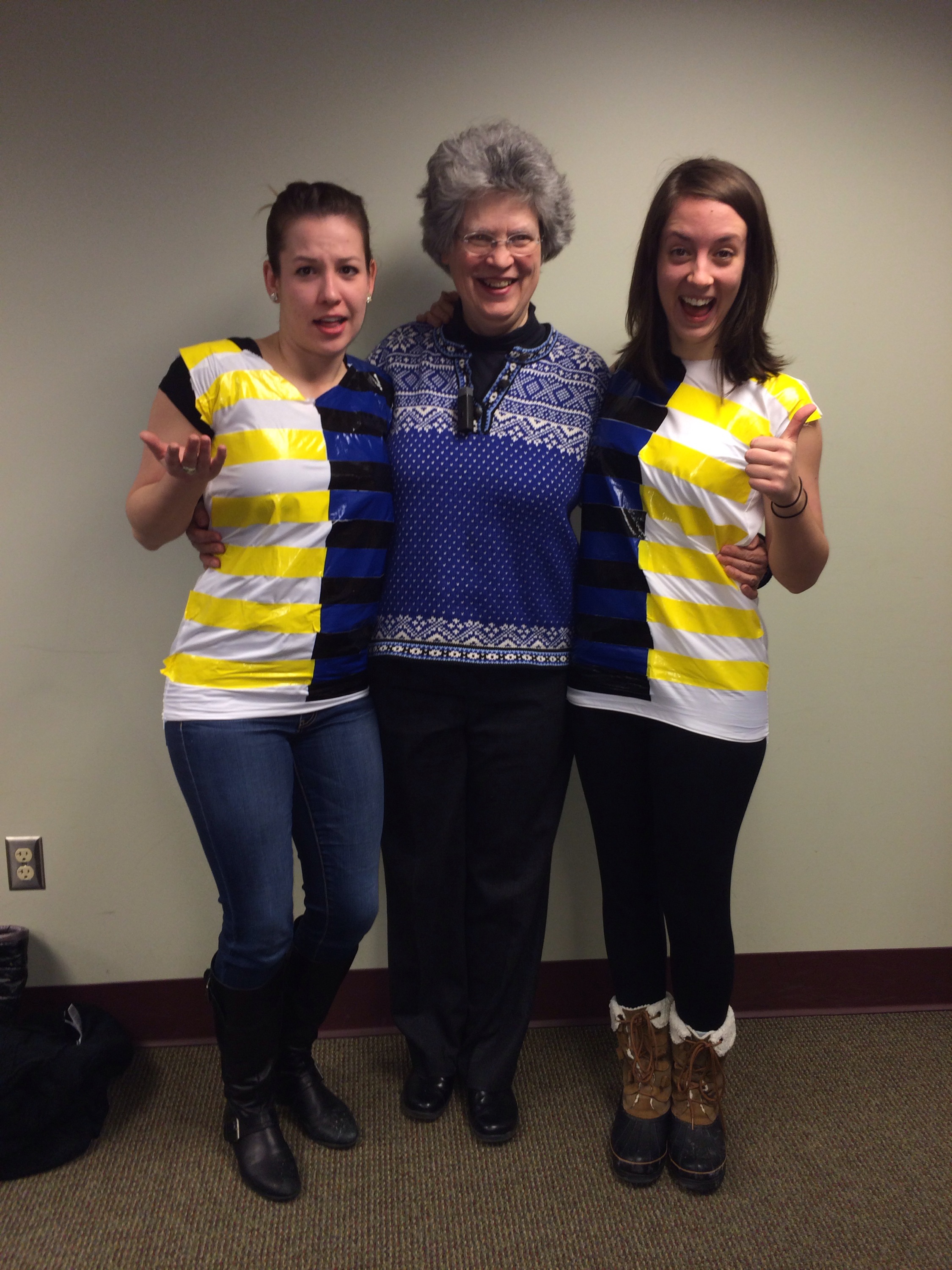
For our Neurological of Visual Perception class this morning we all wore the colors that we saw the dress to be.
“The Dress” is a picture that nearly crashed the internet last week and sent everyone on the World Wide Web into a heated discussion of what color the dress really was. Well as second years in Optometry school we are currently taking a class called Visual Neurological Perception. It is in this class that we are learning (in simple terms) “exactly how we see”. Starting on the level of the photopigment in our retina and expanding to pathways much more complicated we are learning about the amazing way that light enters into the eye and is transmitted into signals that our brain interprets into an image. The odd coincidence about “The Dress” and this class is that we had our first test of the semester on the exact morning that the picture blew up on the internet.
Today in lecture we finally settled the debate and I am happy to bring you the correct answer! From the designer, the dress is actually Blue and Black. But due to many different settings ranging from the camera that took the photo, to the screen that you are viewing the photo on, to the differing amount of photopigment in your eye… everyone has been in a debate of what color the dress really is. I was interested to learn that a mother of the bride took this picture of the dress and sent it to the bride and groom of whom were the first two to see the opposite colors. In very simple terms there are a few things that go into creating this phenomenon… The easiest that I think to understand is that the light falling on the dress is bluer than the light on the background of the picture. Since the dress is in the shade, it is back lit by the blue sky, whereas the background is lit by the sunlight which is a yellow shade. Therefore the main idea is that we don’t know what the illuminant is on the dress but we do know that the:
– sun illuminates the background
– sky illuminates the dress
These two create a confusion of the visual system which results in:
– gold (shade) and black (light) = look the same color
– blue (white) is the same as white (shade)
Therefore it is possible for your brain to see both colors depending on your screen resolution, the lighting of the room that you are in, and your unique cells in your eye.
Although this is a very simple answer to the complex question, it has been pretty exciting to be able to give the correct answer and to understand the exact science behind the photo. It has brought great attention to the neurological visual system and has enlightened everyone to the true complexity of our vision. I hope that this will help to prove how complex our eyes truly are and that everyone can see that there is a lot more to going to the eye doctor than “Better 1 or 2”. When an Eye Doctor looks into your eye they are examining not only how well you see, but also the health of all of the structures and cells in your eye and how well they are aging. It is important to have a yearly eye exam because all of these structures can change dramatically over a year without ever showing you any signs or symptoms of a deficit before it is too late.
Therefore is it an exciting time to be an Optometry student to fully understand the science behind this photo and for many other reasons. At this point in the semester I have completed 3 full eye exams on my family members and am excited to keep learning to improve these skills. In 10 days I will be going back to Jamaica for my second mission trip through the Fellowship of Christian Optometrists and in April I will be going to Washington D.C. for the American Optometric Association PAC Advocacy Conference. So needless to say I am very excited for the upcoming few months and will be back on here before I know it with the conclusions of the trips!

Here are two OPT II’s, Caitlin Walker and Chelsea Monroe, with our professor Dr. Angela Brown